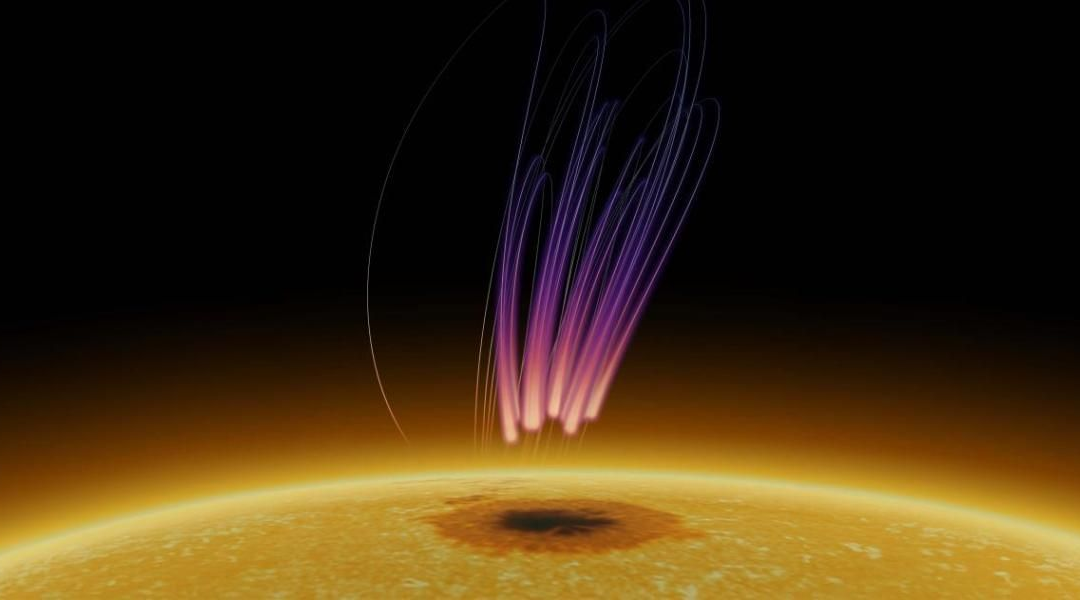Detection of long-lasting aurora-like radio emission above a sunspot
On Earth, the aurora borealis and aurora australis (also known as “northern lights” and “southern lights”) are natural displays of light produced from the collision of charged particles and atmospheric gases. They occur over the Earth’s polar region, where the magnetic field shows a converging geometry.
In our study published in Nature Astronomy, we discover an extraordinary aurora-like display — 40,000 km above a relatively dark and cold patch on the Sun, known as a sunspot.
However, instead of visible light like on the Earth, we observe this auroral-like display in the radio part of the electromagnetic spectrum over the sunspot. This radio emission shares similar characteristics with the auroral emission seen in other planetary magnetospheres like Jupiter and Saturn and low-mass stars. They have peculiar, long-lasting polarized radio bursts lasting over a week, unlike typical solar radio bursts lasting for minutes or hours.
Our spatial and temporal analysis suggests that the detected radio emissions spanning a vast region over the sunspot originate from the electron-cyclotron maser (ECM) emission, involving energetic electrons entrapped in the converging magnetic fields. The timings of the radio bursts are not directly linked to solar flare activity. The sunspots are cooler, and intense magnetic regions provide favourable conditions for ECM emission, depicting similarities with the magnetic polar caps of planets and analogous radio auroral phenomena.
Our model suggests intermittent flare activity appears to pump energetic electrons into large-scale magnetic field loops anchored at the sunspot, powering the ECM radio emission above the region.

Unlike the Earth’s auroras, these sunspot aurora emissions occur at frequencies ranging from hundreds of thousands of kHz to roughly 1 million kHz — a direct result of the sunspot’s magnetic field being thousands of times stronger than Earth’s.
Similar to the modulated radio aurora we observe from rotating stars, we also note this radio emission over the sunspot as the sunspot rotates. Discovering auroral-like emissions from our Sun may reveal fundamental connections in astrophysical phenomena.
See also NJIT Scientists Uncover Aurora-Like Radio Emission Above a Sunspot
